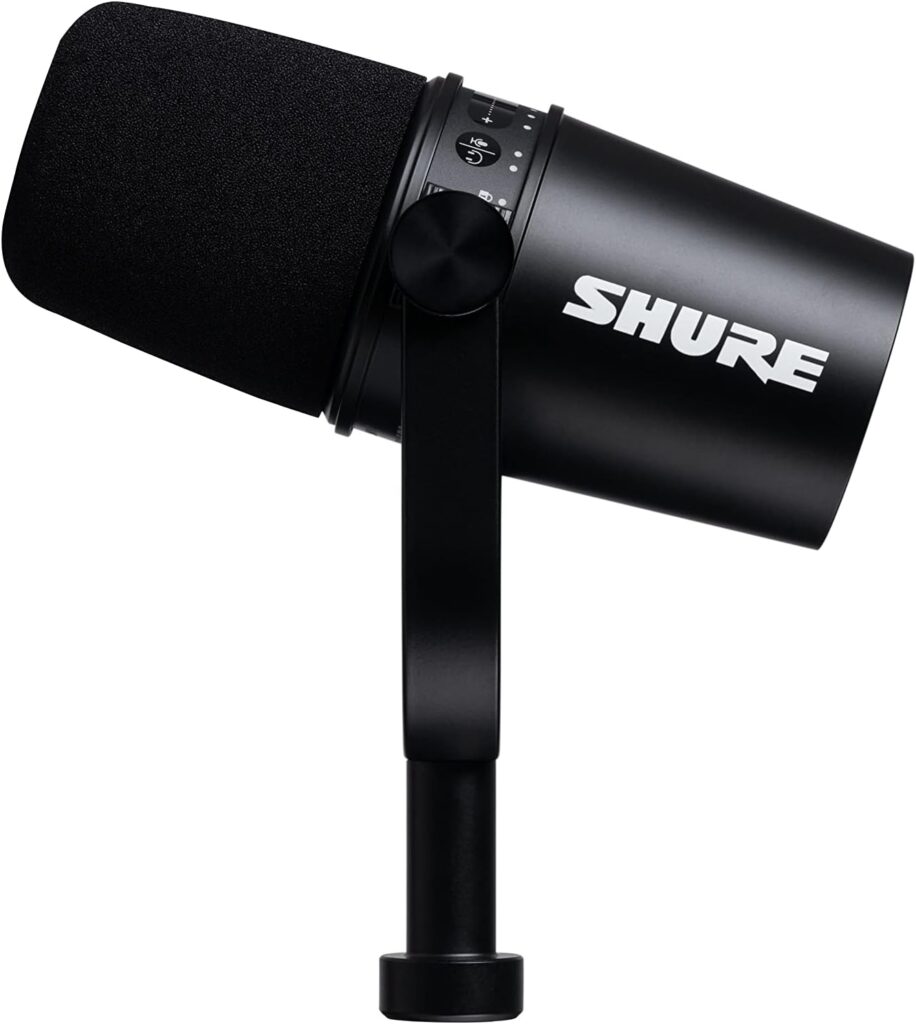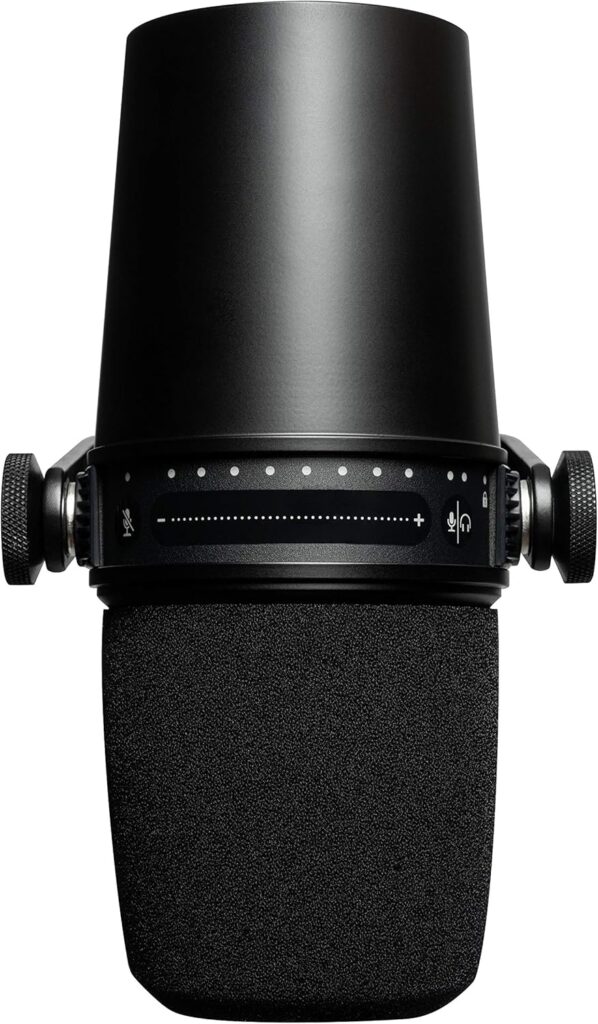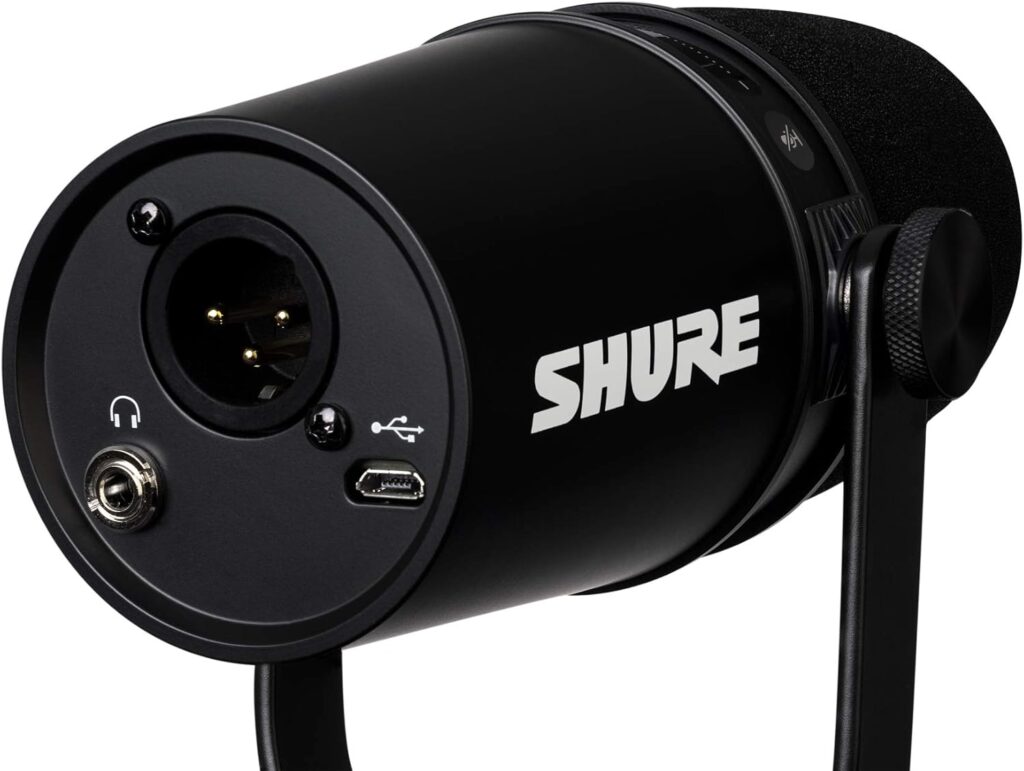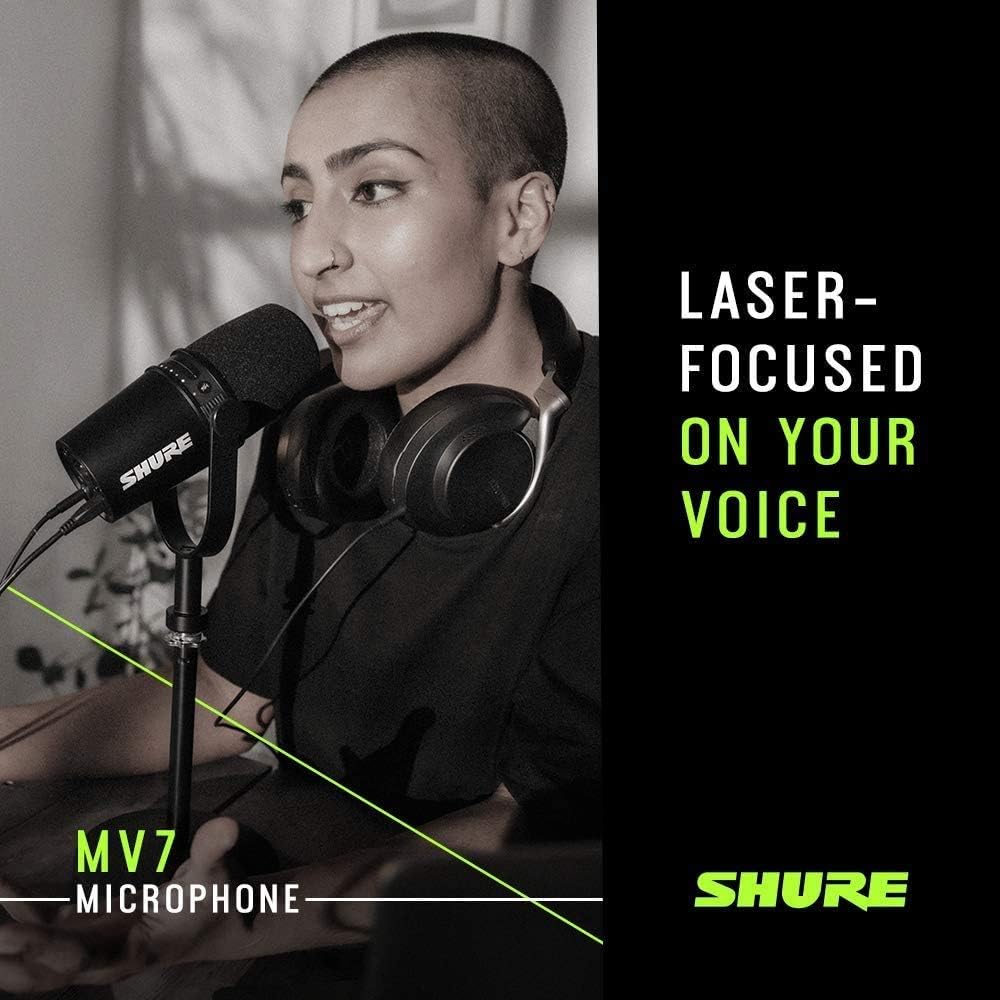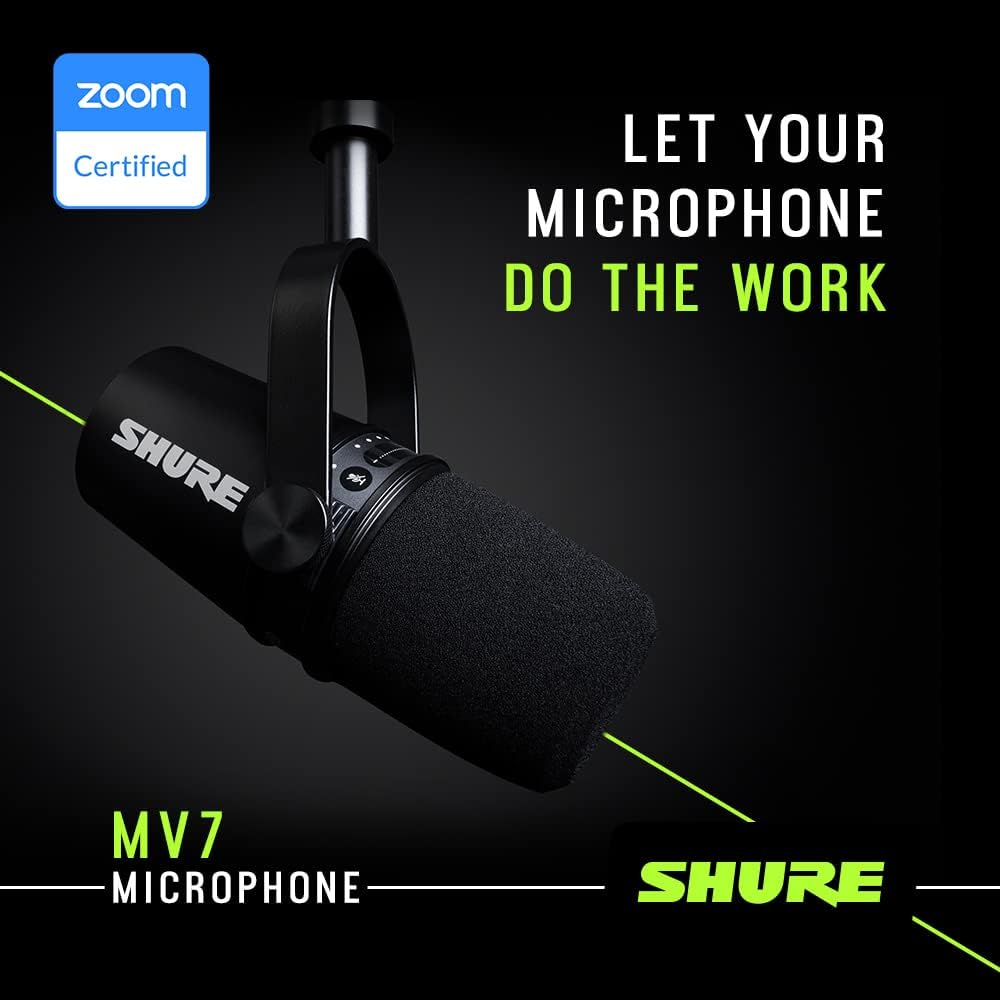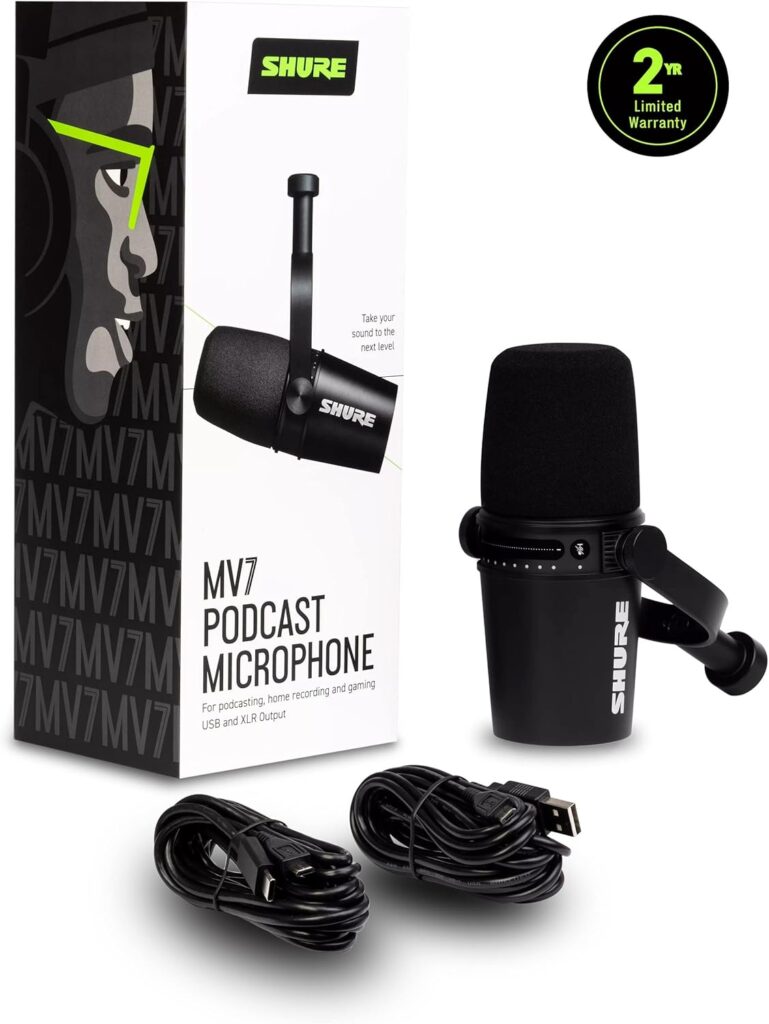Shure MV7 Review
The Shure MV7 is a microphone that has captured the attention of podcasters, streamers, and content creators since its release in late 2020. Known for its hybrid USB/XLR connectivity, sleek design, and professional-grade audio quality, it promises to bridge the gap between accessibility and performance. As a product from Shure—a brand synonymous with audio excellence for nearly a century—the MV7 carries high expectations. In this review, we’ll explore its design, features, sound quality, usability, and value proposition, followed by a detailed FAQ section to address common questions.
Shure MV7 Review
The Shure MV7 is a dynamic microphone designed primarily for spoken-word applications like podcasting, streaming, and voiceovers. Drawing inspiration from the legendary Shure SM7B—a studio staple used by icons like Michael Jackson and modern podcasters alike—the MV7 aims to deliver similar tonal warmth and clarity in a more compact, versatile package. Priced at around $249 USD, it’s more affordable than the SM7B ($399) while adding USB connectivity, making it a plug-and-play option for beginners and a flexible tool for pros.
The MV7 comes in two color options—black and silver—and features a sturdy metal build with a yoke mount for easy positioning. It’s equipped with a cardioid polar pattern, a frequency response of 50 Hz to 16 kHz, and a unique touch panel interface for controls. Its hybrid nature allows users to connect via USB (to a computer or mobile device) or XLR (to an audio interface), offering unmatched flexibility.
Design and Build Quality
The MV7’s design is a nod to its SM7B predecessor, albeit in a more compact form. Measuring 6 inches long and weighing 1.21 pounds, it’s noticeably smaller and lighter than the SM7B (7.5 inches, 1.7 pounds), making it easier to integrate into tight workspaces. The all-metal chassis feels robust and durable, capable of withstanding the rigors of daily use—a hallmark of Shure’s engineering.
On the top, a touch-sensitive panel replaces traditional knobs and buttons, featuring a mute button, a mic/headphone toggle, and a slider for adjusting gain or headphone volume. LED lights indicate levels (green for mic gain, orange for headphone volume), adding a modern flair. While the touch controls look futuristic, they can feel less intuitive than physical dials, especially during live adjustments.
The rear panel houses the connectivity options: a microUSB port (with USB-A and USB-C cables included), a 3.5mm headphone jack for zero-latency monitoring, and an XLR output. The included foam windscreen is effective but prone to slipping off, a minor annoyance. The yoke mount, with a 5/8-inch thread and a 3/8-inch adapter, ensures compatibility with most stands or boom arms, though no stand is included in the base package—a slight drawback for USB mic users accustomed to bundled desktop stands.
Features and Functionality
Hybrid Connectivity
The standout feature of the MV7 is its dual USB/XLR output. USB connectivity allows direct recording to a computer or mobile device (with the right cable, such as a Lightning adapter for iOS), eliminating the need for an audio interface. XLR, meanwhile, integrates seamlessly into professional setups. Uniquely, both outputs can be used simultaneously—ideal for recording a low-res USB backup and a high-res XLR master, akin to shooting RAW and JPEG in photography.
ShurePlus MOTIV App
The MV7’s USB mode unlocks a suite of digital signal processing (DSP) features via the ShurePlus MOTIV app (available for desktop and mobile). The app offers three tone presets—Dark, Natural, and Bright—along with manual EQ adjustments, a limiter, and a compressor to tame dynamics. An Auto Level mode adjusts gain automatically based on your distance from the mic, making it beginner-friendly. The app also controls the monitor mix, balancing mic input and playback through headphones.
While powerful, the app is mandatory for accessing these features, and some users report connectivity quirks with USB hubs or adapters. The DSP settings apply only to USB recordings, not XLR, where you’d rely on external gear or software for processing.
Voice Isolation Technology
Shure touts the MV7’s Voice Isolation Technology, which leverages its cardioid pattern and dynamic capsule to reject off-axis noise. This makes it forgiving in untreated rooms, a boon for home recordists. However, it’s not a magic bullet—loud background noise can still bleed through, though less than with condenser mics.
Sound Quality
The MV7’s audio performance is where it shines. Its dynamic capsule delivers a warm, rich sound with strong low-mids and clear highs, reminiscent of the SM7B but with a slightly brighter character. The frequency response (50 Hz–16 kHz) captures the nuances of human speech effectively, with a subtle presence boost around 4–6 kHz enhancing vocal clarity.
In USB mode with Auto Level enabled, the MV7 produces clean, broadcast-ready audio with minimal post-production needed. The Dark preset adds warmth for deeper voices, while Natural strikes a balanced tone. Bright can be harsh for some, amplifying sibilance unless EQ’d carefully. The limiter and compressor work well to prevent clipping, though heavy-handed settings can sound artificial.
Over XLR, the MV7 retains its quality, though it benefits from a good preamp (unlike the SM7B, which demands high gain). Compared to the SM7B, the MV7 has a touch less midrange smoothness but excels in untreated spaces due to its tighter off-axis rejection.
For music, the MV7 is less versatile. It handles acoustic guitars decently with EQ but struggles with the full spectrum of vocals or instruments, lacking the finesse of studio condensers. Its strength lies squarely in spoken-word applications.
Usability
Setting up the MV7 is straightforward. In USB mode, plug it into a computer, download the MOTIV app, and you’re recording within minutes. GarageBand, Logic Pro, and other DAWs recognize it instantly. Mobile recording (iOS/Android) requires the app and a compatible cable, adding portability for on-the-go creators.
The touch panel is a mixed bag. Muting is quick and silent—perfect for live scenarios—but adjusting levels mid-recording often requires two hands, disrupting workflow. Locking the controls (by holding mute and toggle) prevents accidental changes, a thoughtful touch.
XLR setup is standard: connect to an interface, adjust gain, and go. Without DSP, you’ll need external processing, but the raw signal is robust enough for pro use. The lack of a bundled stand means an additional purchase (starting at $10), which feels stingy at this price point.
Pros and Cons
Pros
- Hybrid USB/XLR connectivity: Unmatched flexibility for beginners and pros.
- Excellent sound quality: Warm, clear audio tailored for speech.
- Voice Isolation: Effective noise rejection in imperfect rooms.
- MOTIV App: Powerful DSP tools for USB users.
- Build Quality: Durable and professional-grade.
Cons
- Touch Controls: Less practical than physical knobs.
- No Stand Included: Adds to the cost for desktop use.
- MicroUSB Port: Feels dated ( rectified in the MV7+ with USB-C).
- Windscreen: Slips off easily.
- Music Limitations: Not ideal for singing or instruments.
Comparison to Alternatives
Shure SM7B
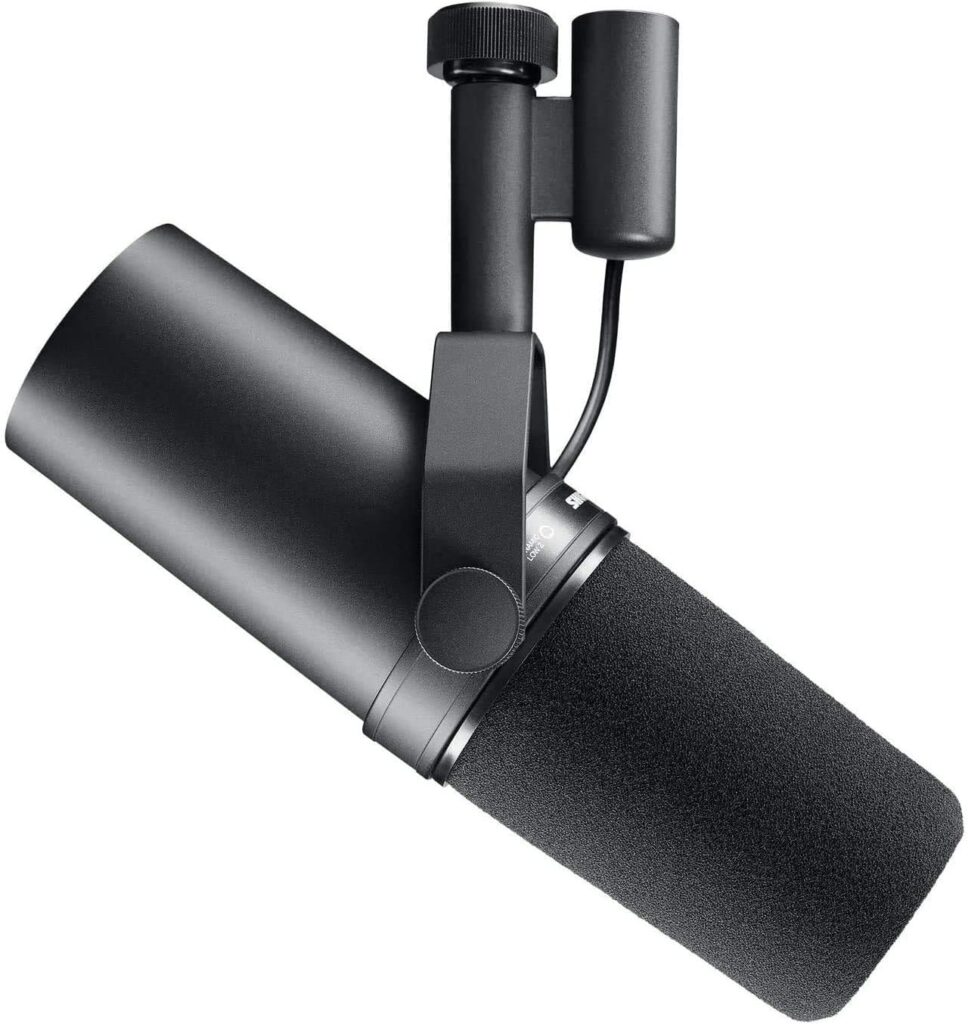
The MV7’s big sibling offers smoother mids and a storied reputation but requires an interface and preamp, pushing the cost over $500 with accessories. The MV7 sacrifices some refinement for convenience and affordability.
Rode PodMic
At $99, the PodMic is XLR-only, budget-friendly, and great for podcasting. It lacks USB and DSP, making the MV7 more versatile.
Blue Yeti
The Yeti ($129) is a USB condenser with multiple polar patterns, excelling for music and group recordings. It’s less focused on speech and picks up more room noise than the MV7.
FAQ Section
1. What’s the difference between the Shure MV7 and SM7B?
The MV7 is a smaller, hybrid USB/XLR mic with built-in DSP via the MOTIV app, priced at $249. The SM7B is XLR-only, larger, and smoother-sounding but requires an interface and preamp, costing $399+. The MV7 is brighter and more beginner-friendly; the SM7B is a studio classic.
2. Can I use the MV7 without the ShurePlus MOTIV app?
Yes, via USB or XLR without DSP. The app is needed for tone presets, EQ, and Auto Level in USB mode.
3. Does the MV7 require phantom power?
No, it’s a dynamic mic and doesn’t need phantom power. USB powers it directly; XLR relies on your interface’s preamp.
4. Can I use the MV7 with my smartphone?
Yes, with a compatible cable (e.g., USB-C for Android, Lightning for iOS, sold separately) and the MOTIV app.
5. How does the MV7 handle background noise?
Its cardioid pattern and Voice Isolation Technology minimize off-axis noise, making it effective in untreated rooms, though not immune to loud disturbances.
6. Is the MV7 good for singing or instruments?
It’s functional but not optimal. Designed for speech, it lacks the range and detail of condenser mics for music.
7. Why doesn’t it come with a stand?
Shure assumes users have mounts or prefer custom setups. A tripod bundle costs $10 extra; boom arms are pricier.
8. What’s the difference between the MV7 and MV7+?
The MV7+ (2024) upgrades to USB-C, adds a thicker windscreen, real-time denoising, and a customizable LED panel, costing $279. The original MV7 uses microUSB and simpler controls.
9. Can I use USB and XLR at the same time?
Yes, for simultaneous recording—e.g., USB for a quick file, XLR for a high-quality master.
10. Is the MV7 worth the price?
For podcasters and streamers wanting pro sound with minimal setup, yes. Budget users or musicians might prefer cheaper or more versatile options.
Conclusion
The Shure MV7 is a triumph of versatility and performance. It distills the SM7B’s essence into a compact, hybrid design that caters to modern creators without sacrificing quality. While the touch controls and accessory omissions frustrate, its sound, build, and dual connectivity make it a standout in the crowded microphone market. For anyone seeking professional audio without the pro price tag, the MV7 deserves a spot on the desk.

